Tech Analysis: Honda RS125R 1991
Born from the silence of the paddock, forged into perfection.
In the Golden Era of the two-stroke era, the Honda RS125R of Team Pileri became the icon of an unrepeatable age. A simple and precise motorcycle, shaped to win through mechanical elegance and human intelligence, dominating its class like no other.

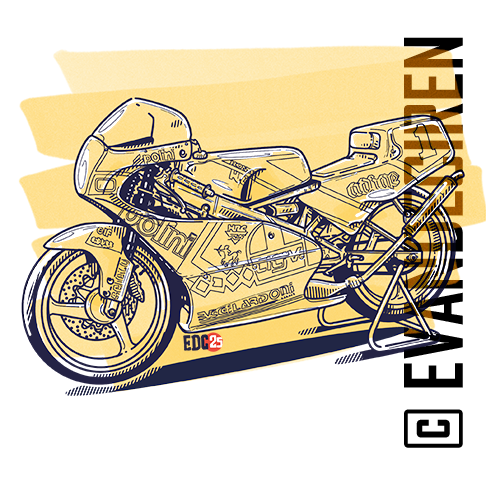
The Beginning of a New Formula
At the end of 1986 the Honda RS125R made its debut on European circuits ready to redefine the very concept of a Grand Prix motorcycle. It was born to meet the new regulations of the Fédération Internationale de Motocyclisme, which demanded more accessible machines, yet the Tokyo factory managed to create a true technical masterpiece. With a 124cc single cylinder engine and a chassis built around the principle of functional simplicity the small Honda immediately revealed a winning nature. It was not a loud motorcycle, it did not seek attention; it spoke only on the track, in a language made of engine revs, perfect lines and silent victories.
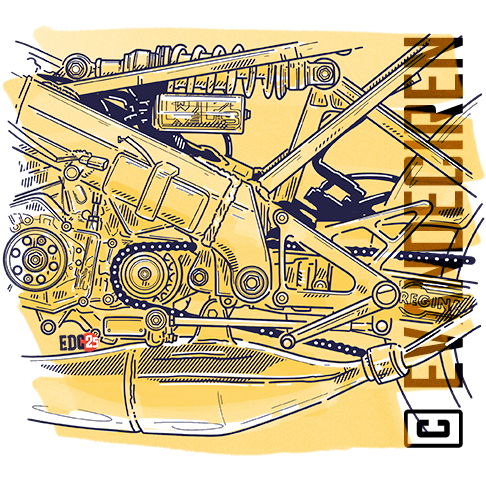
The Aluminum Body
The soul of the RS125R was contained within a twin beam frame forged in polished aluminum, sharp as a blade. Every weld told the story of the Japanese obsession with precision. The engine was set perfectly in the center, compact and light, while the White Power suspension and Brembo braking system completed a chassis of perfect balance. This combination not only ensured agility but allowed the rider to truly feel the track, to communicate with the asphalt corner after corner. In an era of complex machines the RS125R stood out for its essential character, a motorcycle without excess created to let pure talent emerge.
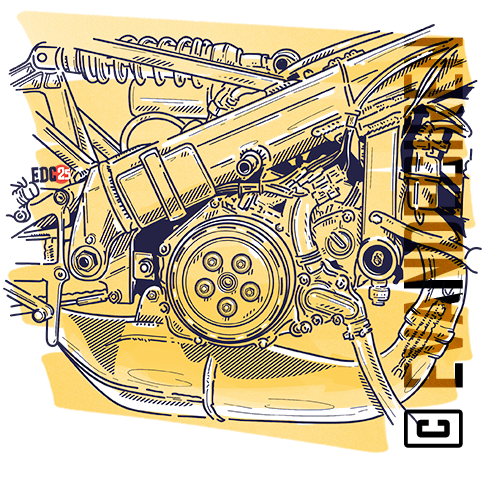
The Heart That Beats Two Stroke
The engine, a single cylinder inclined at 18°30’, was a small marvel of engineering. Made of die cast aluminum, it delivered linear power and instant response, capable of turning every straight into a whip crack. But the true revolution lay in the exhaust control valve secretly introduced in the official HRC kits, a system that allowed torque and power to be adjusted according to engine speed, giving the 125 a smoothness unknown to its rivals. It was as if the motorcycle breathed, measuring its breath at the perfect moment. A small heart, yet beating like that of a predator.

The Touch of Team Pileri
In the Team Pileri garage every screw was adjusted as if it were worth a world title. The Italian team managed to transform the Japanese project into a perfect weapon, combining technical rigor with artisanal sensitivity. The RS125Rs of Capirossi and Gresini were cared for in every detail: fuel mixtures calibrated by hand, suspensions adapted to each circuit, steering geometry refined to the millimeter. The rider became an extension of the machine and the machine a projection of his will. Every race weekend was a ritual and the silence before the start carried the weight of a destiny written in engine revs.
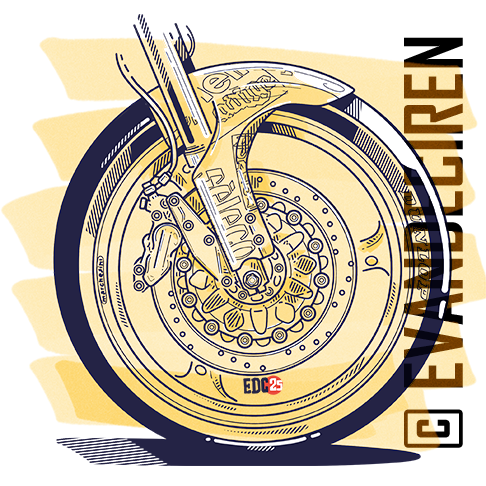
Power in Precision
While rivals chased horsepower the RS125R won through balance. The secret was in the management of everything: Brembo brakes with 290 mm discs, Marchesini wheels, Dunlop tires, and a setup that allowed surgical braking and cornering at the edge of physics. Every component was chosen not to impress but to perform. In an era when power seemed to mean everything Honda proved that mechanical refinement and structural lightness could be the real strength. It was a human motorcycle, precise yet forgiving, an ally rather than a beast to tame.

The End of Innocence
As the years went by the 125 class changed its face. More complex electronics arrived, frames became extreme, and race strategies more calculated. Yet the RS125R of Capirossi remained a symbol of purity, a memory scented with fuel mix and warm oil. Its simplicity, its dry and unmistakable sound still represent the essence of true racing motorcycling. It needed no computers, only skilled hands and a steady heart.
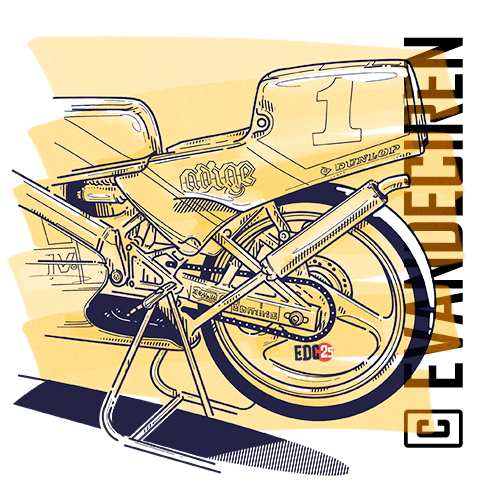
The Voice of the Two Stroke
Those who saw it race can never forget its sound, a sharp scream announcing the passing of talent. The Honda RS125R was more than a motorcycle, it was a language. Every detail from the polished frame to the Keihin carburetor spoke of an era when mechanics was art and the racetrack a canvas to be painted with the throttle. It was the Golden Era of the two stroke, romantic, violent and unrepeatable. A time when perfection was not found in numbers but in the gesture.

Conclusion: Echo of Perfection
Looking at the Honda RS125R 1991 today means stepping into a silence still filled with sound. The ticking of cooling metal, the lingering scent of Castrol oil and fuel mix in the air, the memory of that high pitched scream cutting through the circuit like a blade. This machine was never just a motorcycle, it was a gesture. Every weld on its aluminum frame, every screw tightened by hand, spoke of a philosophy forged between Japanese precision and Italian passion, united under the discipline of the Team Pileri workshop. The RS125R did not chase brute force; it sought harmony, weight balanced to the millimeter, a chassis as sharp as a katana, and an engine that responded like a living instrument. In the right hands, it became an extension of the body, a line of energy tracing perfection on the asphalt.
This was the essence of the Golden Era of Grand Prix racing, a time when speed was pure emotion, when rider talent mattered more than electronics, and lightness was not just an engineering goal but a way of life. The Honda RS125R embodied that purity, a reminder of a generation that lived for detail, for sound, for risk. In today’s world of data, sensors, and digital precision, its simplicity feels almost spiritual, a mechanical memory that refuses to fade.
The echo of its two stroke engine is not nostalgia, it is gratitude. It reminds every racing soul that perfection is born not from complexity but from balance. And while modern motorsport races toward innovation, somewhere on the curves of Estoril or the straights of Jerez that faint sharp sound still resonates: the song of the Honda RS125R The Light Weapon, the small machine that taught the world that when lightness reaches perfection it becomes lethal.